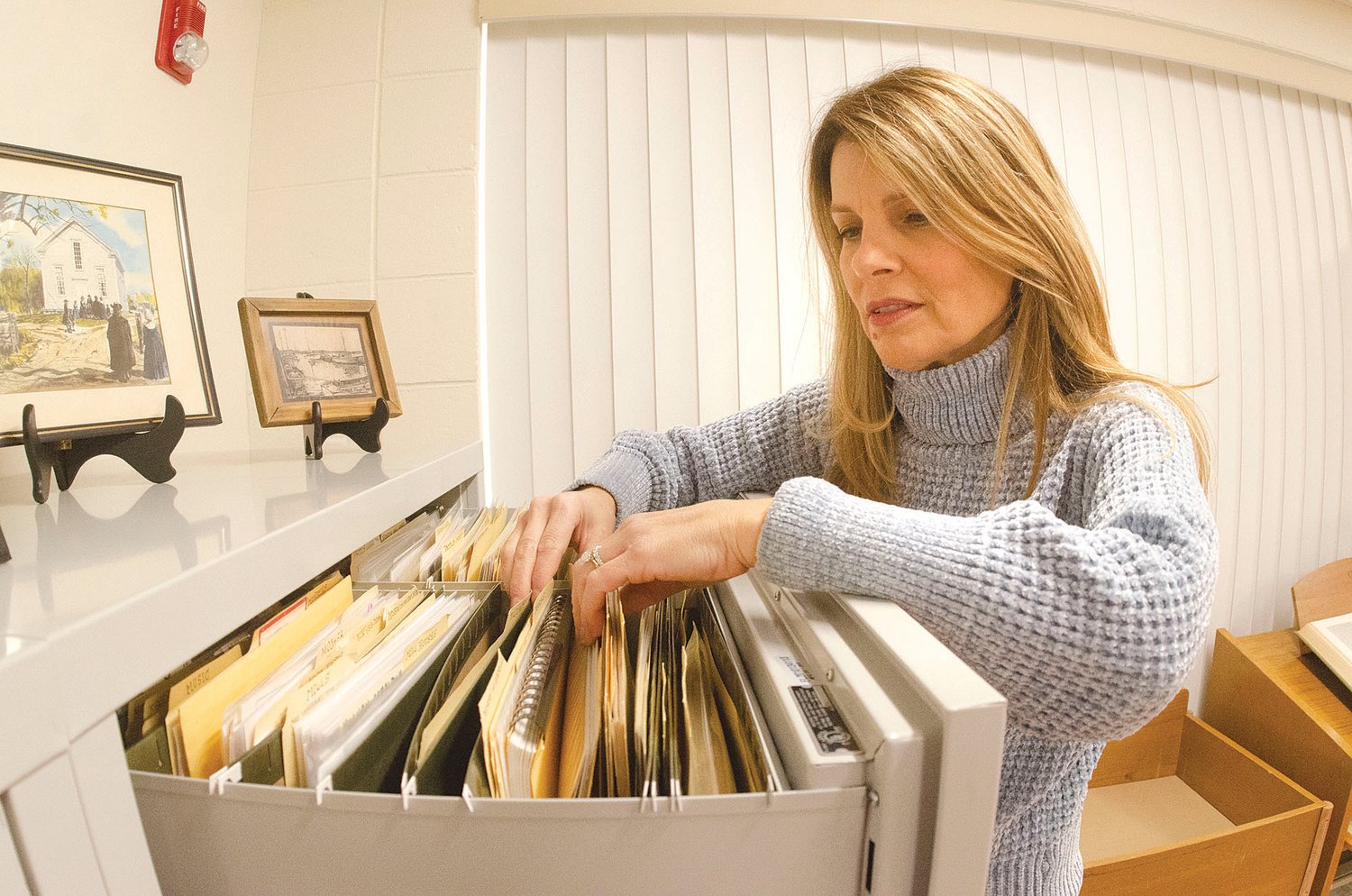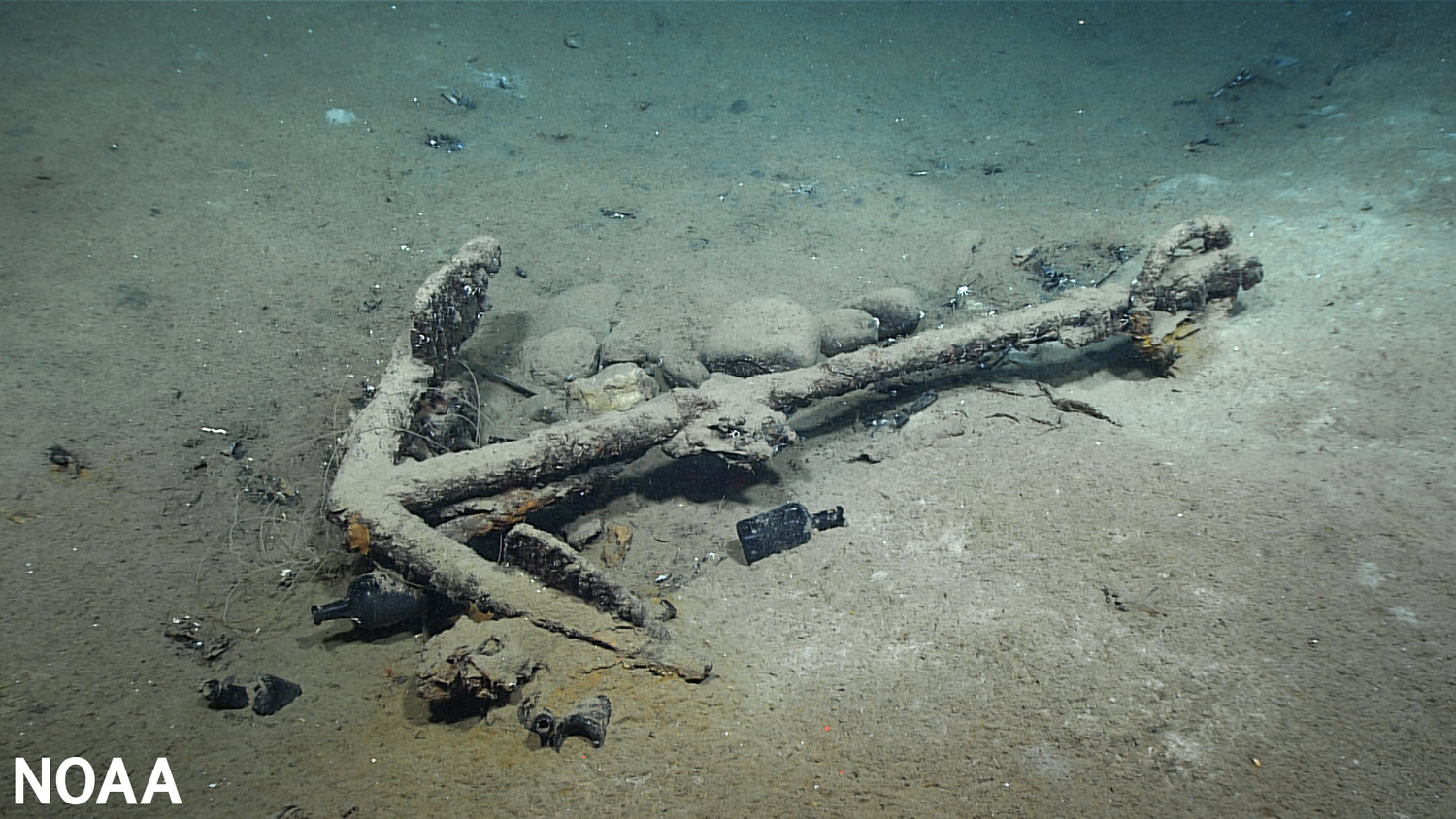Local researchers instrumental in cracking Westport whaling ship mystery
Months-long effort paid off following discovery of Industry wreck
Robin Winters walked into work at the Westport Free Public Library one morning last September and found a doozy of a request waiting for her: Archaeologists needed help researching the history of a …
This item is available in full to subscribers.
Please log in to continue |
Register to post eventsIf you'd like to post an event to our calendar, you can create a free account by clicking here. Note that free accounts do not have access to our subscriber-only content. |
Day pass subscribers
Are you a day pass subscriber who needs to log in? Click here to continue.
Local researchers instrumental in cracking Westport whaling ship mystery
Months-long effort paid off following discovery of Industry wreck
Robin Winters walked into work at the Westport Free Public Library one morning last September and found a doozy of a request waiting for her: Archaeologists needed help researching the history of a Westport-based whaling ship that sank nearly 200 years ago, and could she help?
"I love getting reference questions — it's like playing Nancy Drew," Winters said Monday. "Some of the questions we get are really interesting. But we never had a shipwreck call. My interest was immediately piqued."
Five months later, Winters and her colleagues' dogged determination to learn more proved crucial when researchers in late February located and identified the wreck of the 64-foot Westport brig Industry 6,000 feet deep in the Gulf of Mexico. The discovery of the ship, which sank in 1836, is providing new insights into the lives of whalers, many of them of Native American and African descent, who were a crucial part of the whaling industry in this area in the early to mid-19th century.
"It didn't matter what color you were, what nationality you were. As long as you did a good job, that's all that mattered," Winters said.
The Industry
The Industry, built at Westport Point in 1815 by master builder Isaac Cory Jr., was one of the three "father" ships of the town's whaling industry, which was active here from 1811 through 1879.
Industry measured 64.4 feet in length by 20 feet in the beam, and displaced 94 tons. The brig served a long life, hunting mainly sperm whales in the Atlantic, Caribbean and Gulf of Mexico for more than 20 years, before losing its masts in a storm on May 26,1836.
As on many whaling voyages of the day, crew members came from all walks and stations of life, and Industry had ties to one of the most important families of early Westport. Though crew records had long been lost, members of the Cuffe family served aboard Industry on previous voyages. Philanthropist, merchant, educator and abolitionist Paul Cuffe's son William served as navigator on at least one trip, and his son-in-law Pardon Cook, as navigator. Cook is believed to have commanded more whaling voyages than any other person of color in the nineteenth century,
Discovery
Though lots of background information on the ship survives, the fate of Industry's last crew had long been a mystery, until Winters started digging into the story, working out of the library's history room named in honor of the late local history lover Norma Judson.
For years, researchers had known that the wreck was somewhere in the Gulf of Mexico, as it is the only whaling ship known to have been lost in the Gulf among 214 whaling voyages recorded from the 1780s through the 1870s.
The first recording of a bottom anomaly at the site came when an energy industry research ship visited the location in 2011. Though it was re-visited by a submersible six years later, the site had never been fully explored.
Last year, NOAA partnered with James Delgado, Ph.D., the senior vice president of SEARCH Inc., Scott Sorset, a marine archeologist with the U.S. Bureau of Ocean Energy Management, and Michael Brennan, Ph.D., also of SEARCH Inc., to take a detailed look at the site while they tested a new NOAA submersible. It was Delgado who had first reached out to Winters seeking help last September.
On Friday, Feb. 25, Winters, Delgado and other researchers watched via a live video feed as the NOAA research vessel Okeanos Explorer arrived at the site and sent a submersible more than a mile down to have a look.
Winters said she was floored and could not look away as the ROV hovered over the wreck for an hour and a half, revealing telltale signs of a whaler including the tryworks, a cast iron stove that would have been used to render whale blubber into oil.
Though little else remains of the wreck above the mud, the submersible captured images of three anchors, bottles, bricks and stone, bits of wood and other features. Researchers also noted the lack of copper sheathing at the site, which clued them in that the copper-free Industry, known at the time as a "leaky" ship, lay before them.
A composite of photographs taken from above the wreck site confirmed its size and shape, and the NOAA team confirmed the shipwreck’s measurements matched those of Industry in historic documents.
And they determined that the location of the shipwreck, 72 nautical miles from the last recorded location off the mouth of the Mississippi River, could be attributed to drift of the crippled but still floating ship within the Gulf of Mexico’s Loop Current.
Mystery solved
One of the main questions that remained even after the dive was happened to the 15-member crew.
Researchers knew that after the Industry hit rough weather in late May 1836, another whaling ship, Harmony, out of Nantucket, salvaged what it could, taking a large number of whale oil barrels off the ship. There is no mention of the crew in that record.
Early on, researchers "were hoping that the crew or captain either made some port, or got picked up," and that documentation survived. But as Winters and others here continued researching the story, she and her colleagues, among them Westport's Ray Shaw and Judith Lund, began to suspect that if the crew had made it to a Southern port, they would have faced imprisonment or worse.
Added Delgado:
“If the black crewmen had tried to go ashore, they would have been jailed under local laws. And if they could not pay for their keep while in prison, they would have been sold into slavery."
In early March, after the wreck was explored by the NOAA submersible, Winters reached out to the Nantucket Historical Society and Nantucket Atheneum, looking specifically for more information about Harmony. She was looking specifically for any other information that shed light on whether Harmony took the Industry's crew aboard.
"Unfortunately they had nothing (though) the library assistant sent me 26 pages of stuff. Stuck in there was a little blurb that was in a newspaper from the fall of 1835," Winters said.
That clipping talks about the Westport-based brig Elizabeth, that had gone in to Holmes' Hole, the name of Vineyard Haven at the time.
Winters had seen that name in her research, but not in any direct reference to the fate of Industry's crew. The clipping also revealed that prior to the wreck, both Elizabeth and Industry had visited the Vineyard in roughly the same time period, over the late fall of 1835.
"I had visions of these boats being out in the middle of nowhere, all alone. That wasn't the case," Winters said. "They would pass each other and yell 'Ahoy,' or would send the captains' wives from one boat to the next so they could socialize" — a practice called gamming.
"So the light went on. I thought, 'Is this a coincidence?' To me, I felt like it was worth further digging."
She called the Atheneum back, asked for more information on the Elizabeth specifically, and was surprised when she got a return phone call from the Atheneum's Jim Borzilleri 10 minutes later .
"He said, 'I have your answer,'" she said.
It was contained in a small blurb published in the Nantucket Inquirer and Mirror, which reported on June 17, 1836, that Elizabeth had landed safely in Westport with passengers from the Industry.
It was the breakthrough moment she had been waiting for — the crew had been rescued by fellow Westporters.
"I was literally screaming into the phone," she joked. "The answer was there the whole time ... why couldn't I have found it six months earlier?"
Winters drove home from work that day, literally talking to herself aloud in the car — "I couldn't believe it. I was giddy."
Work not done
Having found historical proof that Industry's crew made it back safely to Westport, Winters said she and her fellow researchers here are moving on to the next phase of their work, which she hopes will answer more questions into the identity of those who sailed aboard Industry on her last voyage.
"It's personal to me now," she said. "Plus, this is my town. I feel like I know these people. I find them constantly in the back of my mind; I'm always thinking about them."
She hopes that as news of the discovery and fate of the crew becomes more well-known, people who may have family stories about a whaling ancestor, or who have documentation that could help identify crew members or provide other information, will come forward.
She is also proud to be involved in a project that has shed light on the lives of mariners and whalers in early to mid-19th century Westport, the islands and Buzzards Bay. Though not all involved in whaling were of African or native descent, they were undoubtedly part of the business, she said, and the Industry is an important and tangible part of that history.
“Black and Native American history is American history, and this critical discovery serves as an important reminder of the vast contributions Black and Native Americans have made to our country,” U.S. Deputy Secretary of Commerce Don Graves said.
“This 19th century whaling ship will help us learn about the lives of the Black and Native American mariners and their communities, as well as the immense challenges they faced on land and at sea.”












